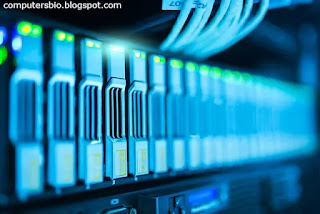Best Model For Distributed Computing
1. Distributed Computing Model (DCM)
The DCM is a type of parallel processing where each node in the network performs the same task independently. Each node then sends its results back to the central server. The advantage of this method is that it is relatively simple to implement and requires little overhead. However, the disadvantage is that if any single node fails, the entire system will fail.
2. MapReduce
MapReduce is a programming model for efficiently performing large-scale data analysis on clusters of computers. In mapreduce, the input data is split into smaller pieces called “map tasks”, which are processed independently. These outputs are then combined together using a second step called “reduce tasks”. The output of these reduced tasks is then sent back to the master node. The advantages of this model are that it is scalable, fault tolerant, and highly efficient.
3. MPI
MPI stands for Message Passing Interface. It is a standard protocol for communicating between nodes in a cluster. The advantage of this model is that it is easier to implement than DCM. However, it does not scale well and is prone to failure.
4. Hadoop
Hadoop is a framework for storing and analyzing big data sets. It consists of two parts: HDFS (Hadoop Distributed File System), which provides file storage; and YARN (Yet Another Resource Negotiator), which manages the allocation of computer resources. The advantage of this approach is that it is scalable, reliable, and fault tolerant.
5. Spark
Spark is a general purpose engine for machine learning and analytics. It is designed to work with both structured and unstructured data. It uses RDD (Resilient Distributed Dataset) to store data and supports many different types of operations including sorting, filtering, aggregating, joining, and transformations. The advantage of this technology is that it is fast and scales easily.
6. Storm
Storm is a real time computation platform for handling massive amounts of streaming data. It was developed at Twitter and is now open source. It uses a distributed architecture that makes it extremely scalable. The advantage of this solution is that it is easy to use and offers high performance.
7. Flink
Flink is a stream processing library built on top of Apache Beam. It is designed to handle large volumes of data and perform complex computations over streams of data. It is based on the concept of operators and pipelines. The advantage of this software is that it is easy and intuitive to use.
8. Apache Beam
Apache Beam is a toolkit for building scalable pipelines. It is designed to simplify the creation of complex data processing systems. It includes APIs for defining data flows, managing state, and running computations. Beam is implemented using the Cloud Dataflow service and is supported by a wide variety of languages including Python, Scala, C, Go, JavaScript, and others.
9. GraphX
GraphX is a graph database management system that is designed to store graphs in memory. It is intended to be used in situations where traditional databases do not fit. GraphX is based on the idea of storing graphs in a sparse matrix format. It is designed to be highly concurrent and scales well to large numbers of cores.
10. Grid Computing Model (GCM)
Grid computing is a type of distributed computing that uses a collection of computers to solve computational problems. GCMs are similar to DCMs in that they both allow users to access data over a network. However, unlike DCMs, grid computing requires specialized hardware that enables the user to share resources across different locations.
11. Cloud Computing Model (CCM)
Cloud computing is a type of virtualized computing infrastructure that provides shared computer processing power, storage space, and networking bandwidth as a utility service accessible over the Internet. CCMs differ from traditional cloud services in that they provide a set of preconfigured virtual machines that can be accessed via the internet. Users do not need to install any additional software or hardware to utilize these services.
12. Cluster Computing Model (CCM/SCM)
Cluster computing is a type of parallel computing that involves the use of multiple computers connected together to perform a task. These clusters are generally composed of servers that run operating systems such as Linux and Windows. Clusters are useful for tasks that require high performance and reliability.
13. MapReduce Model (MRM)
MapReduce is a programming model developed at Google that was first introduced in 2004. MRMs are used to break down large datasets into smaller chunks that can then be processed independently. MRMs are ideal for analyzing massive amounts of data.










0 Comments
Please do not enter any spam link in the comment box.